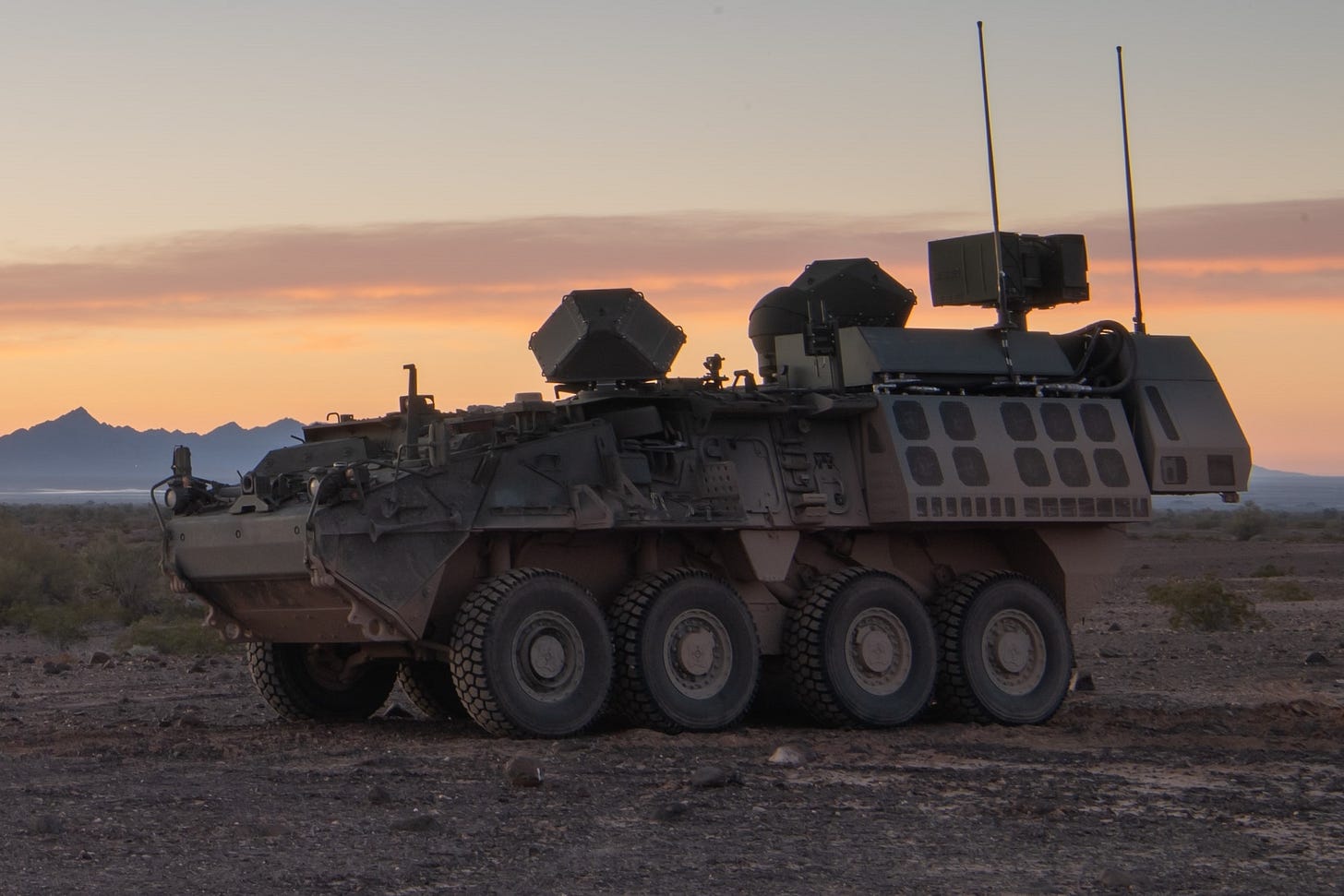The Army's Laser Stryker Is in Trouble
The service's Directed Energy Maneuver-Short Range Air Defense (DE M-SHORAD) laser weapon system is "not mature enough" for duty yet, according to a new GAO report.

The US Army has not only delayed production of its Stryker-mounted high-energy laser weapon system by two years, but is considering ditching the infantry fighting vehicle entirely as its preferred ground-b…
Keep reading with a 7-day free trial
Subscribe to Laser Wars to keep reading this post and get 7 days of free access to the full post archives.


